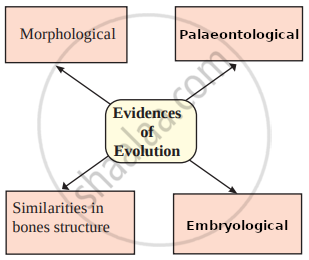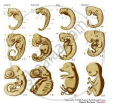Advertisements
Advertisements
प्रश्न
Complete the following chart:

उत्तर

APPEARS IN
संबंधित प्रश्न
What are vestigial organs?
Give two examples of vestigial organs in human beings and plants.
(a) Select the analogous structures from the combination given below:
(i) Forelimbs of whales and bats
(ii) Eyes of octopus and mammals
(iii) Tuber of sweet potato and potato
(iv) Tuber of Bougainvillea and tendrils of Cucurbita
(b) State the kind of evolution they represent
“Two areas of study namely 'evolution' and 'classification' are interlinked'. Justify this statement.
State a reason for the increased population of dark coloured moths coinciding with the loss of lichens (on tree barks) during industrialization period in England.
Can the wing of a butterfly and the wing of a bat be considered homologous organs? Why or why not?
Human tailbone is a vestigial organ. Explain.
The organs which perform similar functions but have different basic structure are called :
(a) asymmetric organs
(b) analogous organs
(c) homologous organs
(d) homophonic organs
The presence of which of the following types of organs in two organisms indicates that they are derived from the same ancestor?
(a) analogous organs
(b) respiratory organs
(c) digestive organs
(d) homologous organs
One pair of organs in the following animals are not homologous. This is :
(a) forelimbs in humans and lizard
(b) forelimbs in lizard and frog
(c) wings in butterfly and bat
(d) wings in bat and bird
In a class, students were asked to observe the models/slides/pictures of the skeletons of forelimbs and wings of different organisms. After the observations the students made the following groups of homologous structures. Select the correct group :
(A) Wings of a bird and a butterfly
(B) Wings of a pigeon and a bat
(C) Wings of a butterfly and a bat
(D) Forelimbs of a cow, a duck and a lizard
Write short notes based upon the information known to you.
Embryology
Write the names of those animals in whom the human body organs are functioning.
Explain with suitable examples importance of anatomical evidence in evolution.
Observe the picture and answer the following questions.
A) Which evidence of evolution is shown in the picture?
B) What can be proven with this proof?
C) Give one more example of evidence of evolution
_______ is a connecting link between Annelida and Arthropoda.
With the help of diagrams, describe emasculation and bagging.
Draw a labelled diagram of T.S. of a leaf showing Kranz anatomy.
Define fossil.
Answer the following question:
What are homologous structures? Give an example. Is it necessary that homologous structures always have a common ancestor? Justify your answer.
Very short answer question.
What are homologous organs?
Name the parts shown in the diagram.
Human jaw

Which evidence of evolution is shown in the given picture? Explain the importance of this evidence.

Explain any five types of evidence that support the theory of evolution.
Homologous organs and vestigial organs are examples of ______ type of evidence in evolution.
Tendons and ligaments are examples of ______.
The study of fossil evidence of evolution is called ______
Which of the following is used as an atmospheric pollution indicator?
What were the characteristics of life forms that had been fossilised?
What are we referring to? When we say 'simple organisms' or 'complex organisms'.
How do we compute the age of a rock?
Explain divergent evolution in detail. What is the driving force behind it?
You have studied the story of Pepper moths in England. Had the industries been removed, what impact could it have on the moth population? Discuss.
Find odd one out:
Write down the difference between homologous and analogous organs.
Write avian characters of Archaeopteryx.
